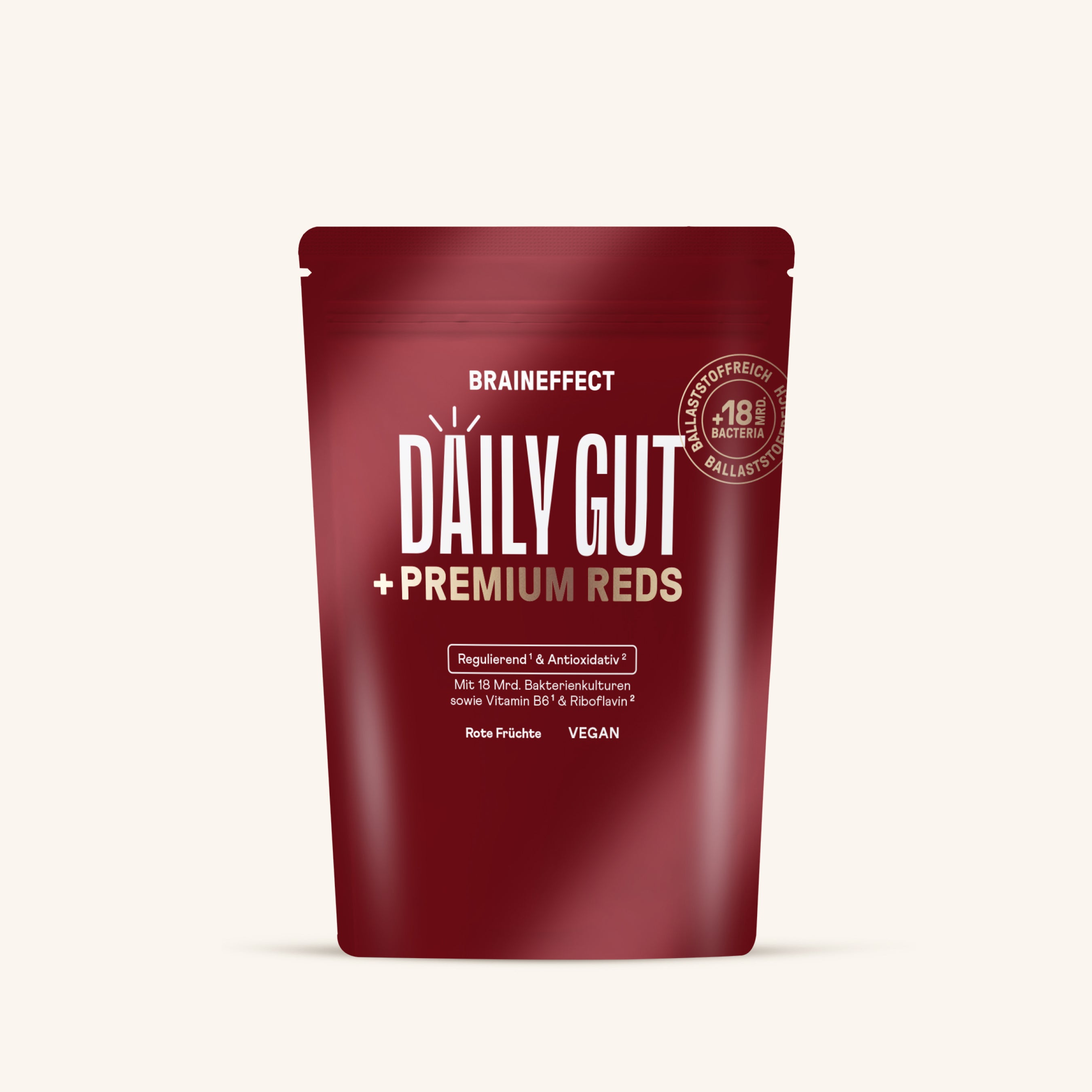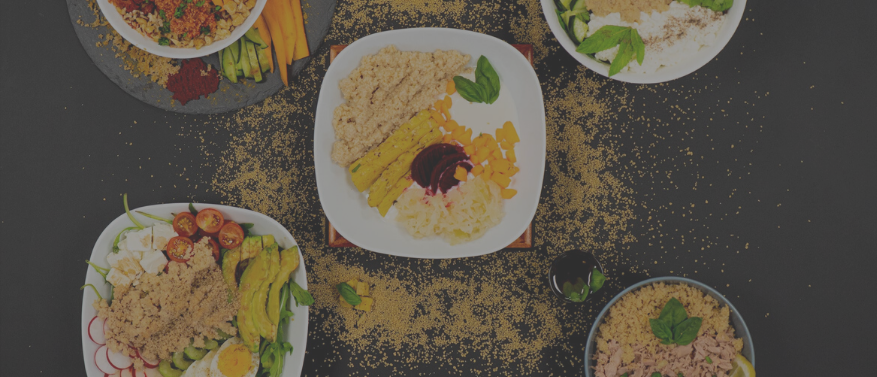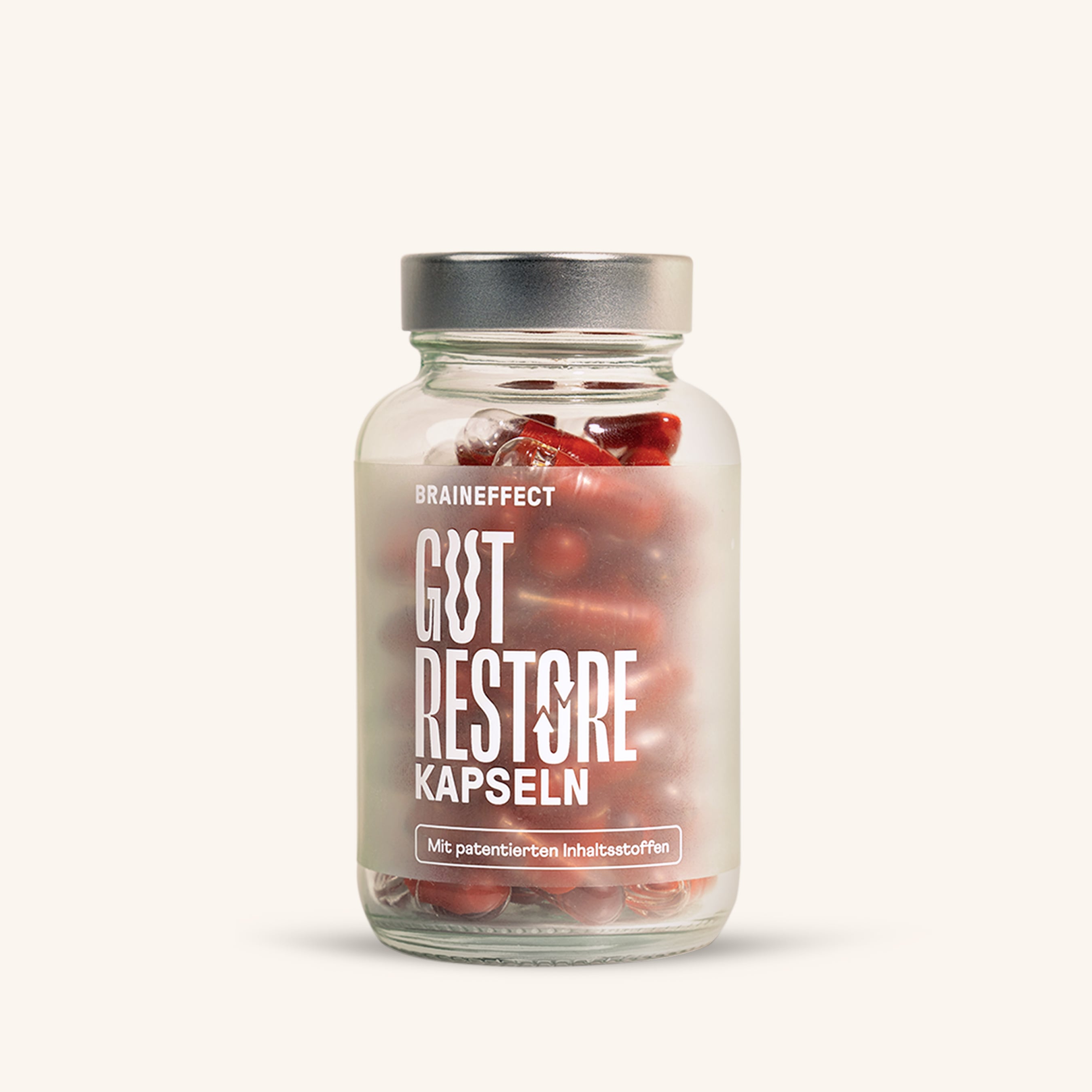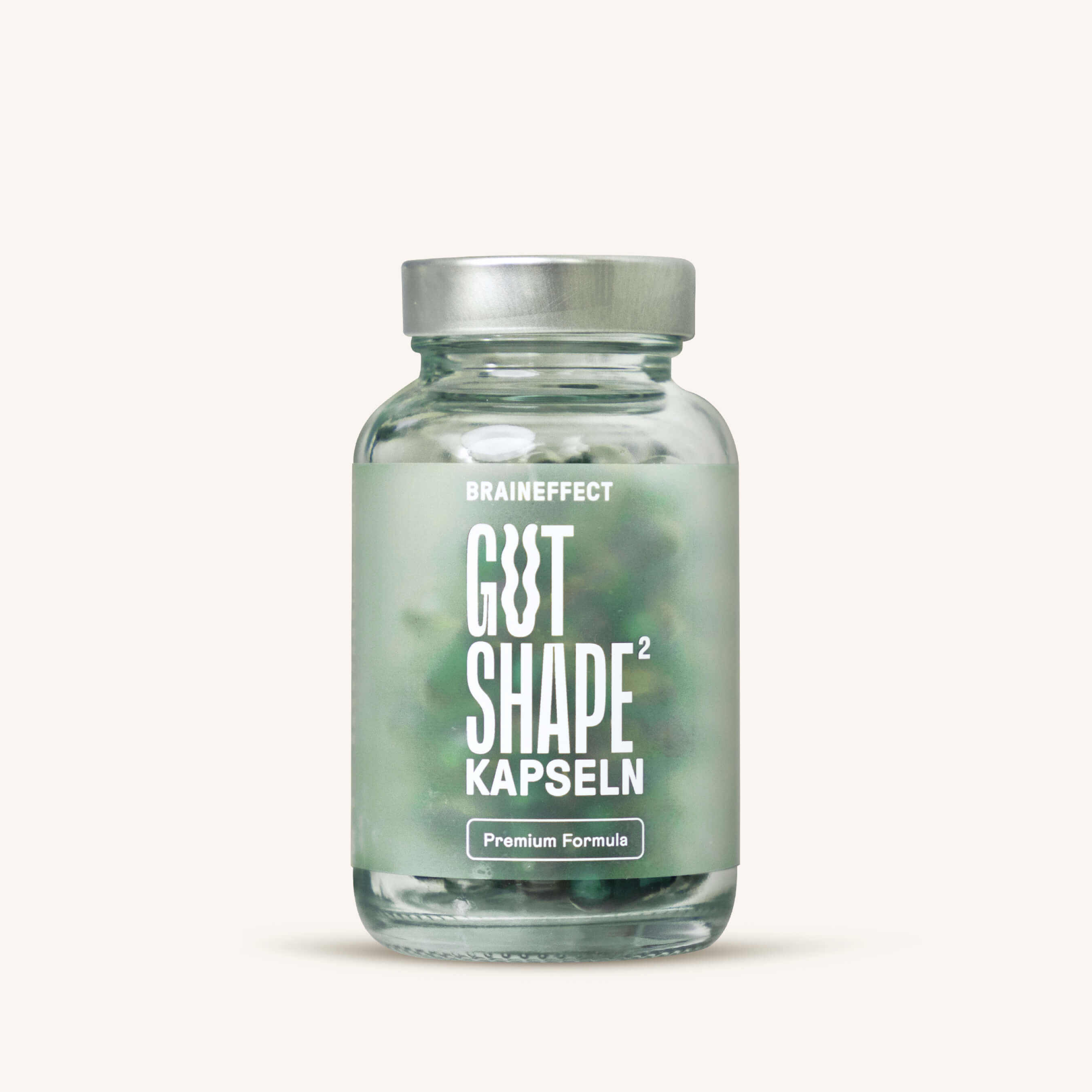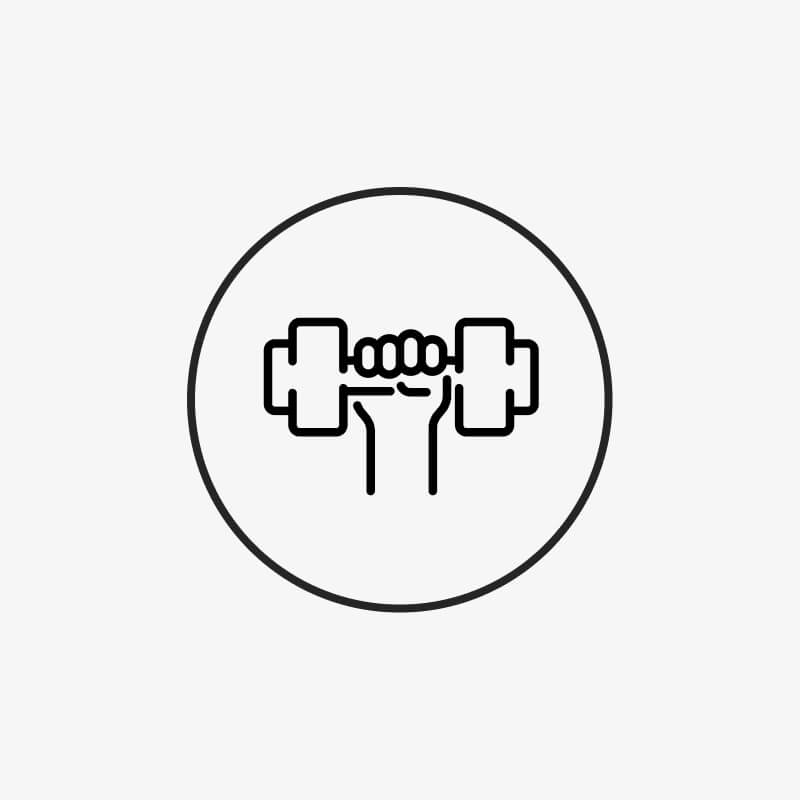To save time, many people rely on a well-known but proven strategy: meal prep. Here's how you can use meal prepping to your advantage.
When you think of meal prep, you think of hours spent in the kitchen, lots of necessary kitchen utensils, and definitely nothing that can be quickly prepared in the office? #noway! We'll show you 5 super delicious #nocooking couscous bowls – perfect for your lunch break.
Table of contents
Meal prep promises to save time and money and sounds so fancy that it could be something completely new.
But that's not the case: Meal prep is essentially an extremely simple and ancient concept . Why you should get involved with meal prep when you're short on time, and what exactly it means, you'll learn in this article.
1. What is meal prep?
If you've read Tim Ferriss's book "The Four Hour Workweek," you should be familiar with the concept of "task batching." This involves collecting all tasks that involve the same activity and completing them all at once.
What emails are to Tim Ferriss, meal prep is to the kitchen. Meal prep is short for meal prepping and originated in the fitness scene in the USA.
It all started with bodybuilders who needed a simple way to better control their macronutrient intake .
By planning and cooking your meals in advance through meal prepping , you can avoid many work steps and mental blocks.
2. How does meal prep work?
Step 1 : Planning is key to meal prep. Depending on your lifestyle and nutritional goals, consider in advance which dishes you want to eat in the coming days .
You can either look for delicious recipes or simply stick with something familiar. If necessary, plan healthy snacks for in-between meals to bridge energy gaps.
Step 2 : Next, you need to shop for groceries and stock your fridge. You'll need fresh vegetables, protein sources, and healthy fats. Once you have all the ingredients, it's time to prepare.
Step 3 : It's a good idea to wash and chop all your ingredients before putting them on the stove. This way, you can reduce some of the stress by working step by step, so you don't have to worry about anything boiling over, overcooking, or burning while you take care of the other components.
Step 4 : Now the ingredients go into the pot or pan. Separate all the ingredients according to their preparation method and cook them accordingly.
Step 5 : Finally, the ingredients are packed separately in tight glass, metal or plastic containers and stored in the refrigerator.
This helps the food retain its flavor better for several days . All you have to do now is prepare your planned meal in the morning before training or work and pack it securely.
BRAINEFFECT HACK : In our shop, you can find high-quality performance food that supports your mental performance. For example, SLEEP capsules and SLEEP SPRAY with melatonin help you fall asleep faster in the evening.
3. Meal Prep Benefits
In practice, it's been proven time and again how much time and effort meal prep saves . But the benefits go beyond this subjective perception.
French researchers found in a study with over 40,000 participants that good meal planning led people to eat healthier and more varied meals .
They also found that the risk of overweight and obesity decreased . [1] Researchers at the University of Washington and the University of Cambridge analyzed the influence of preparation time on healthy eating habits in 2014.
They found that longer preparation time is an indicator of higher quality and variety in the diet. People who spend relatively little time preparing and cooking place more value on "convenience foods," the study results show. [2]
The Harvard School of Public Health also argues that meal prep not only saves time and effort, but also money and can even reduce stress .
Meal prepping can reduce stress by avoiding situations where you make poor last-minute meal decisions . [3]
4. Meal Prep Disadvantages
One potential disadvantage of meal prep is that you end up eating a monotonous diet due to poor planning . You can avoid this by not focusing exclusively on macronutrient distribution, but by adding as much variety as possible to your meals .
This also helps you avoid another disadvantage: boredom . What happens when you eat the same dish too often ? A feeling of oversaturation sets in, and you're fed up with it.
Meal prep also comes with a certain prerequisite: You need space for the fresh and prepared foods in the kitchen and especially in the refrigerator .
Otherwise, they'll be spoiled before you can eat them. So before you dive into this project, check how many times you've had to throw away food in the past few weeks because you couldn't store it properly.
BRAINEFFECT HACK : In our shop, you can find high-quality performance food that supports your mental performance. Our smart FOCUS capsules and our Think Drink FOCUS NOW support your brain performance with vitamins B5 and B12, for example.
5. 5 Meal Prep Recipes
Meal prep doesn't have to be complicated. We'll show you 5 super delicious #nocooking couscous bowls – perfect for your lunch break.
5.1 Dried Tomato Bowl
The Lady in Red is especially suitable for a crisp and fresh start to the workweek. The mix of fruity tomato and yellow curry gives the bowl an intense flavor.
What's in it:
1/2 cup couscous
1 cup strong vegetable broth
3 tbsp tomato paste
3/4 tsp curry powder
2 carrots
1/2 cucumber
50 g dried tomatoes in oil
3 tbsp walnuts (chopped)
1 handful of parsley (chopped)

To do:
- Take a cup and fill it to the brim with couscous.
- Put the couscous in a bowl.
- Put the kettle on and boil enough water for 2 cups of vegetable broth.
- Now fill the same cup you used for the couscous with vegetable stock. Feel free to add a little more vegetable stock powder (the flavor can be quite intense).
- Mix the couscous with the vegetable stock and add the tomato paste and curry powder.
- Let the couscous sit for 3-4 minutes. During this time, you can chop the carrots and finely chop the cucumber.
- Then chop the dried tomatoes and chop the walnuts.
- Now it's time to channel your inner food stylist. Decorate your couscous with all the toppings and impress your colleagues.
5.2 Lemon Tuna Bowl
The hearty tuna bowl with fruity-sweet dressing is the perfect all-rounder for a delicious lunch menu.

What's in it:
70 g couscous
140 ml vegetable stock
100 g tuna
25 g walnuts (chopped)
6 basil leaves (chopped)
2 tablespoons olive oil
1 organic lemon
1 teaspoon honey
1 tbsp balsamic vinegar
To do:
- Fill your kettle with enough liquid for 250 ml of vegetable broth.
- Add enough vegetable stock powder to the boiled water and season to taste. The flavor can be a bit more intense, if you like.
- Place the couscous and broth into a bowl. Then let both simmer for 3-4 minutes.
- In the meantime, you can chop the walnuts and basil leaves.
- For the dressing, squeeze the lemon and mix its juice with the olive oil, honey and balsamic vinegar.
- Finally, add all the toppings to the couscous. Your lunch bowl is ready!
5.3 Athlete Bowl
For the perfect balance between desk madness and lunchtime indulgence, you should definitely try the Athlete's Bowl. It provides you with the necessary portion of vitamins, fiber, and protein, and makes no compromises on taste.

What's in it:
70 g couscous
80 g lupin tempeh
50 g beetroot
20 g raw sauerkraut
2-3 carrots
1-2 tablespoons of sprouted flaxseeds
50 ml soy yogurt sauce with herbs
To do:
- Place the couscous and approximately twice the amount of hot water into a bowl. Let it rest for 5 minutes.
- Cut the tempeh into cubes, chop the carrots, and slice or cut the beetroot into smaller pieces.
- Stir sauerkraut and flaxseed into the couscous.
- Soy yogurt and basil are particularly good for the yogurt dressing. Simply chop the basil and mix it into the yogurt.
Good to know: Flaxseeds contain not only omega-3 fatty acids and fiber, but also lignans . These are primarily known for their antioxidant properties. Tempeh is also a perfect addition to your sports bowl, as the cooked soybeans are naturally rich in protein .
5.4 Buddha Bowl with Feta
Are you really hungry again and your stomach is screaming for a break? Then get chopping and your Buddha bowl is ready!

What's in it:
70 g couscous
50 g arugula
35 g feta
3 radishes
3 cocktail tomatoes
1 stick of celery
1/2 avocado
2 boiled eggs
2 tablespoons olive oil
3 tbsp balsamic vinegar
1 lemon (juice)
1 teaspoon salt
1 pinch of pepper
To do:
- First, take the couscous and add 140 ml of hot water (infusion time 3-4 minutes).
- Then tear the arugula and cut the feta cheese into small cubes.
- It's best to slice the radishes and tomatoes.
- You can simply chop the celery into small pieces and mix it with the arugula along with the radishes and tomatoes.
- Halve the avocado (careful: there's a hard pit in the middle!) and peel off one half with a tablespoon. Cut the half into strips.
- Meal Prep Hack: Cook the eggs in a kettle by filling it ¾ full with water, turning it on, waiting until it boils, and then adding the eggs. Make sure the kettle is off before removing the lid. Set a timer for 7 minutes once the eggs are in the kettle and turn it back on. If the eggs start to clatter together too much, briefly turn the kettle off and then back on again. Repeat this process until your timer beeps. Finally, rinse the eggs briefly with cold water, peel them, and cut them into strips.
- For the perfect finish to your bowl, mix together the olive oil, balsamic vinegar, lemon juice, and spices. Pour everything into your favorite bowl and enjoy your lunch break!
BRAINEFFECT HACK: Want to turn your delicious bowl into a real vitamin bomb? Then we have the perfect vitamin boost for you. Simply add a drop of Vitamin D3+ Oil and enjoy your couscous bowl with a little extra boost for your immune system.
5.5 Hüttengaudi Bowl with Mint
If cottage cheese sounds like a melody to your ears, and mint refreshes you just by listening to it? Then it's time for a cottage cheese and mint bowl!
What's in it:
70 g couscous (instant)
50 g cottage cheese
½ small romaine lettuce
½ cucumber
½ leek onion
1 handful of mint leaves
½ garlic clove (optional)
1 tbsp olive oil
2 limes (4–6 tbsp juice)
salt and pepper

To do:
- Place the couscous in a bowl and add about twice the amount of boiling water. Let it simmer for 5 minutes.
- Cut the cottage cheese into cubes, the cucumber into slices or strips, and the leek into small rings.
- Then wash the mint leaves and chop them.
- Optionally, take a clove of garlic, cut it into slices and crush them with a fork.
- Now put the couscous and all toppings into a bowl.
- For the dressing, combine the olive oil and lime juice. Season with salt and pepper to taste.
- Enjoy your Hüttengaudi Bowl as an alternative to the evening on Friday for that special party feeling.
So that meal prep makes your mouth water and doesn't waste time!
6. Conclusion
Whether you're an athlete or an office worker, meal prep can help you avoid a lot of stress in your everyday life, save money, and cook healthily.
With proper planning, you also ensure that you always have enough variety in your meals and don't have to go to the office cafeteria or the bakery around the corner. And proper planning avoids unnecessary food waste.
7. Sources
[1] Ducrot, P., et. al. (2017). The international journal of behavioral nutrition and physical activity, p. 12. Meal planning is associated with food variety, diet quality and body weight status in a large sample of French adults. doi: 10.1186/s12966-017-0461-7 [https://www.ncbi.nlm.nih.gov/pmc/articles/PMC5288891/]
[2] Monsivais, P. et. al. (2014) American Journal of Preventive Medicine, Vol. 47, 6, p. 796-802. Time Spent on Home Food Preparation and Indicators of Healthy Eating. doi: 10.1016/j.amepre.2014.07.033 [https://www.sciencedirect.com/science/article/pii/S0749379714004000]
[3] Harvard School of Public Health (2017). Meal Prep: A Helpful Healthy Eating Strategy. [https://www.hsph.harvard.edu/nutritionsource/2017/03/20/meal-prep-planning/]

